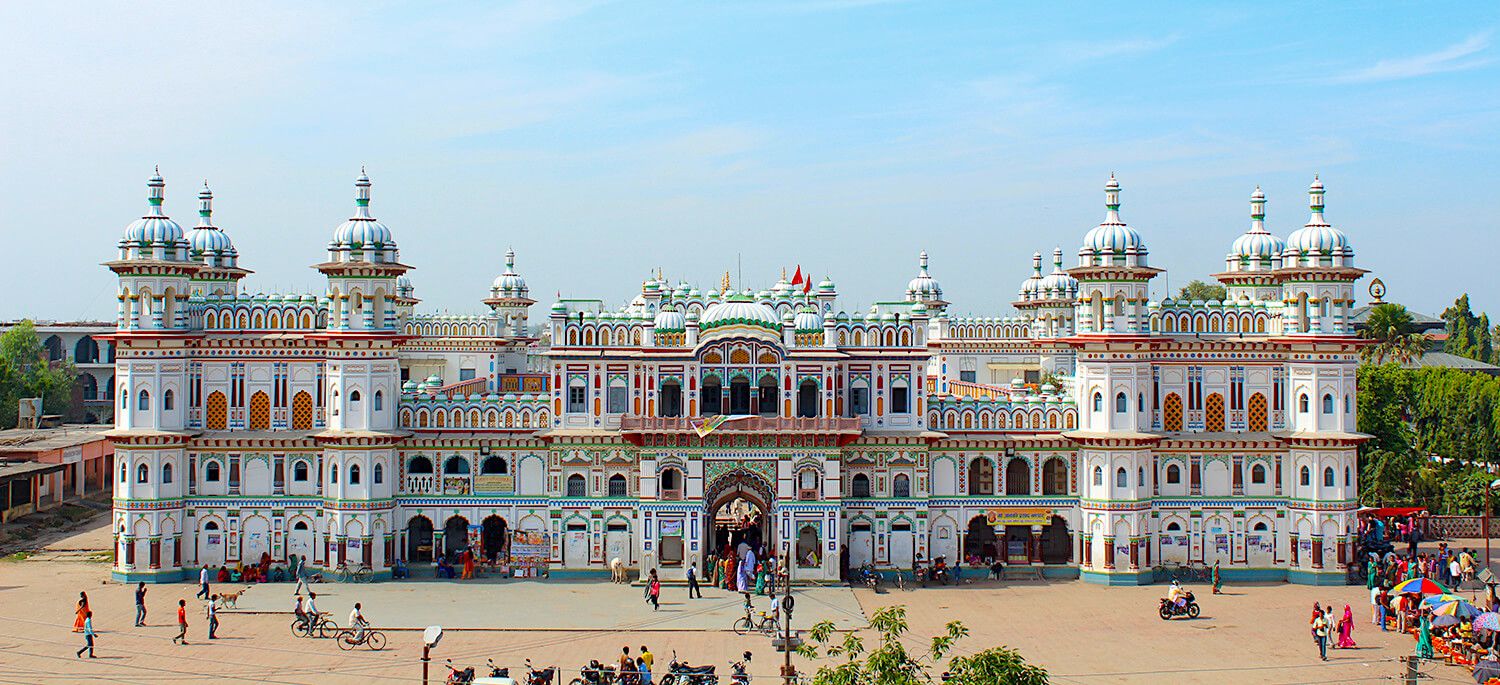So, what does spiritual or spirituality mean to you? I know, it is a broad subject that generally revolves around the concept of perspective. As for me, it is somewhat like a wifi connection where the access point is something we cannot perceive. People also relate this concept by finding the inner self and meaning of their lives. The search for spiritual pleasure can include various activities like indulging oneself in hallucinogenic drug testing, meditating, listening to trance music, and last but not the least, visiting holy places. Holy places are often considered the purest source of these kinds of spiritual experiences.
We all have a spiritual or holy place we visit regularly according to our religious values and principles. As for Hindus like myself, we link spiritualism with anything or any place that resembles our gods. And since we have a total of 3.3 million gods, I will leave the mathematics to you. We have thousands of religious sites oozing with spiritualism and guidance. Especially in India and Nepal, the number of religious sites is hard to count without getting derailed from correction. Since we are going to focus on Nepal for this particular article, let's get started on the list of top 8 spiritual destinations in Nepal. The list does not follow any priority on the basis of numbers as religious importance has no measurement.
1. Pashupatinath Temple:
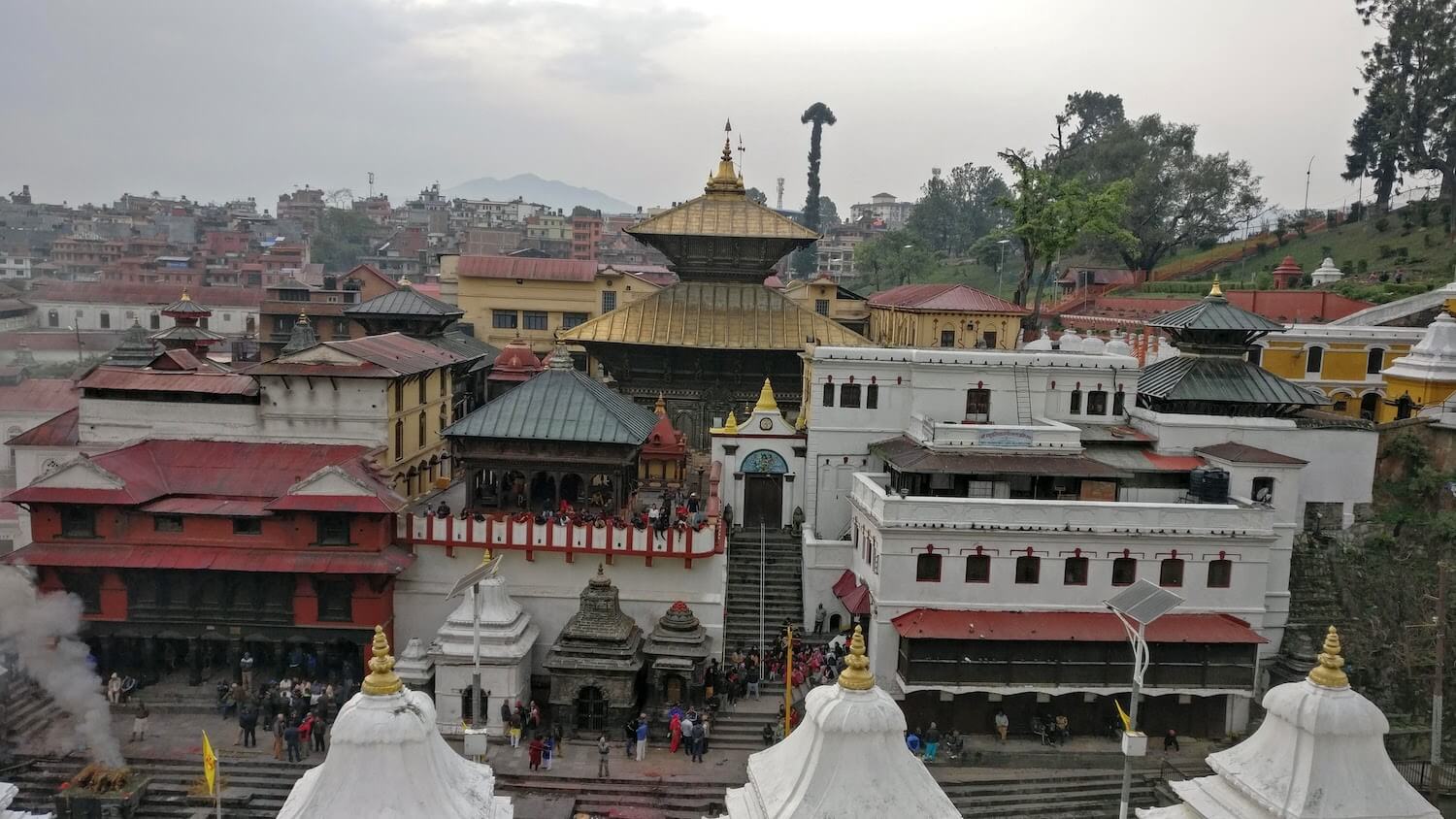
Well no list of religious importance in Nepal can be completed without mentioning Pashupatinath Temple. The sacred temple lies on the Bank of Bagmati River and spreads across a huge area of land in Gaushala, Kathmandu. This place reflects faith and devotion for lord Shiva. Shiva is one of the three vital Gods according to the Hindu Religion Beliefs. Dating back to 400 B.C, the place has nurtured over time and maintained its place among the must-see destinations for Hindu devotees. Of course, the rulers of Nepal have renovated the temple time and again. This has helped the temple to hold its aesthetic and religious quality with the passage of time.
Talking about the architectural aspect of this temple, there are several small shrines in the area which contribute to the magnificence of the main temple. Like many other temples, the main Pashupatinath temple has a pagoda-style design. There are four doors on the four sides of the temple which are painted silver and a roof that raises its beauty with a golden color. On sunny days, the golden shine of the roof reflects the sun rays like a majestic Himalaya. And trust me; I am not exaggerating things for you. Even UNESCO listed this site in their world heritage site's list in 1979 A.D.
Due to religious beliefs and other circumstances, non-Hindu believers are not allowed inside the temple. This is in no means disrespect for other religions, but its best to abide by the rules that have passed onto generations of Nepali people. Another importance of this place is the cremation site by the banks of the Bagmati River. Since the river passes through the temple, one cannot miss the heart-rendering site of people saying goodbye to their loved ones while visiting the temple. Don't let the gloomy environment affect your mood because Hindus have a tradition of burning their dead ones on this particular river bank. The Bagmati River is a holy river that is believed to let the spirits of the dead to safely ascend heavens.
One can easily reach the Pashupatinath temple after landing on the Tribhuwan International Airport in Kathmandu. You can take a local bus or rent a cab and drive 10 minutes to reach the destination.
2. Swayambhunath:
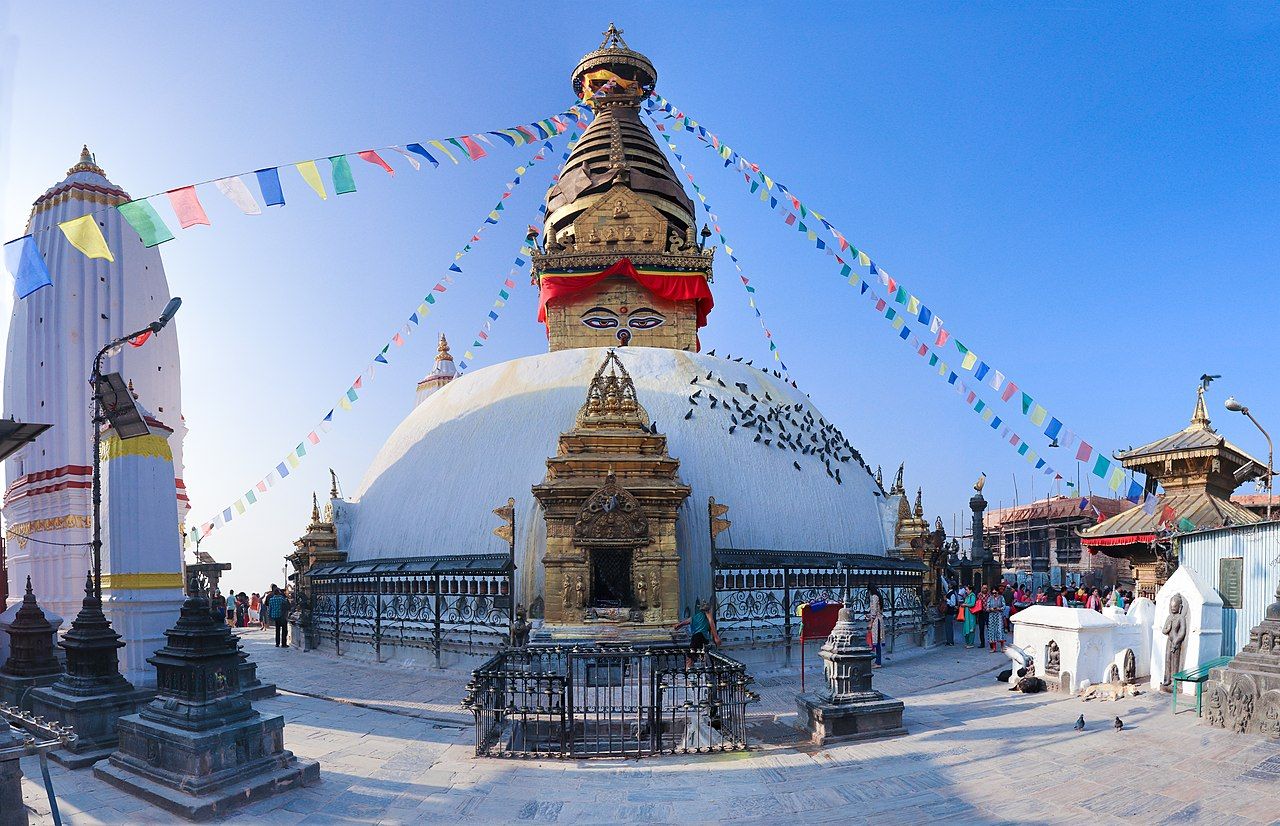
After glancing at the Hindu temple, now it's time to explore the most religious place for Buddhists. Swayambhunath is a tall and magnificent form of architecture that is spotted from many corners of the capital city. The name might have confused you a little, but Swayambhunath basically means "Self-created". The place holds its majesty on top of a small hill in Kathmandu valley. You can stroll around the ring road area of the city and immediately recognize this holy place from your vehicle. How do you confirm? Well, there are three huge statues of Buddha which is clearly visible from the main road. The three Golden statues capture three different parts of Buddha. With its religious importance, the place easily holds its place in the top eight spiritual destinations in Nepal.
The history of Swayambhunath is quite interesting. Let's start with the initial story first. It is believed that the capital city of Kathmandu was once a huge lake. With some turn of events, a Bodhisattva named Manjushree cut one of the hills called Chovar with his huge sword. I know it sounds a bit hard to digest but history is history fellas. After that the water dried up, the valley became a place where people could start their civilization. People believe that the Swayambhunath came into existence at that very moment from a lotus flower. Well, that is pretty much on the totally convincing historical story.
Let's talk about the importance it holds for tourists like you and me. The main temple has two access points to get to the main point. You can either tackle your physical health with 365 steps or take a vehicle along the road that circles the hill to the top. After you reach the top, you will come across a dome-shaped structure with the eyes of Buddha carved onto it. The whole architecture is oddly wonderful and holds a special meaning among the devotees.
As it happens, the white dome or Chaitya is a symbol of world and the two eyes on all sides of the square-shaped top signifies compassion and wisdom. All these features directly relate to the teachings and manners of Lord Buddha. All in all, the temple is a symbol of peace, love, and unity among the Nepali people. You can ask a child where the Swayambhunath temple is and he will immediately lift his finger to the dome-shaped monument resting on top of a hill overlooking the residents of Kathmandu. This place is also known as monkey temple among tourists as there are hundreds of monkeys lurking in the forest. Just don't provoke them or feed them.
3. Lumbini:
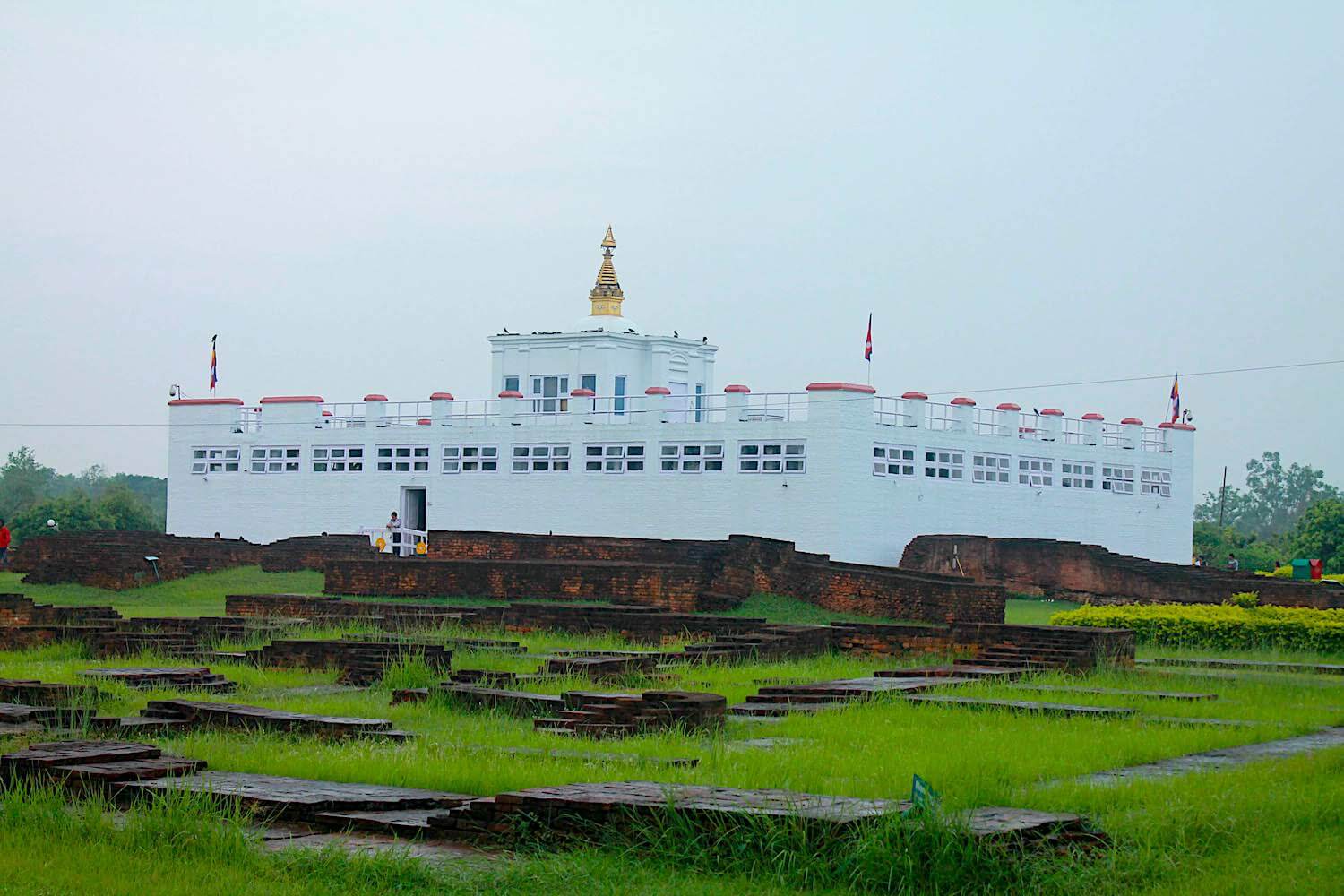
Let's come back to the place where it all started. So most of us are familiar with the whole concept of Buddhism and the man behind this religion. But what about Buddha's personal life and origins? For this, we travel to the terai region of Nepal almost near the Indian borders. The place is called Lumbini and this is the place where Buddha was born. Yes, it still surprises people that Buddha was born in Nepal and not in India. Lumbini is a sacred land away from the busy lifestyle of Kathmandu city. The place receives abundance of sunlight during the summer and a chilly atmosphere during winters.
Lumbini is the home of Buddha or Siddhartha Gautam, his real name. Siddhartha was the prince of Lumbini. He later threw away all his possessions and pleasures in search of true enlightenment. The whole story is long and interesting, but we are here to discuss on the importance of Lumbini. This holy place got listed in the UNESCO world heritage site in 1997 shortly after a German archeologist discovered the remains of Ashoka's pillar. By the way, the pillar still stands strong after decades of natural wear and tear.
One can reach the tranquil environment of Lumbini after a 10 hours drive from the capital city. You could also take a flight from Kathmandu to Bhairawa airport which roughly extends to 30 minutes. You can almost feel the mindfulness and peace of the Buddhist devotees as you stroll around the city. There are several Gompas in the place built by different countries to show their appreciation towards this place. The different architectural designs and attractive paintings on the walls will surely attract you to the beauty of this wonderful destination. There are places where taking photos or even making loud noises are prohibited. Just be aware of these restrictions and enjoy your trip to the fullest. As they say, break the rules but not the laws.
4. Muktinath:
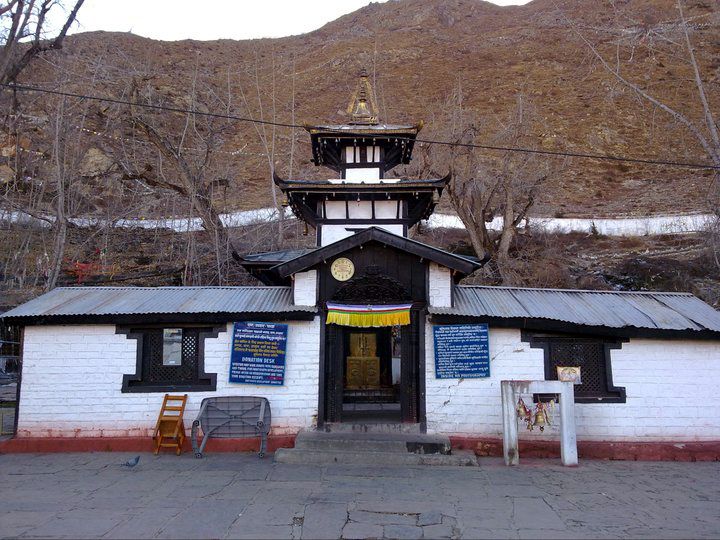
Travelling all the way up the geographical ladders of Nepal, Muktinath is another place that cannot miss its position on the list of top 8 spiritual destinations in Nepal. The spot lies at a chilling altitude of 3710 meters filled with Rocky Mountains and alpine vegetation. So, what could possibly be holy about his place? Well, Hindus have a different kind of connection with this place. We like to call it a place of salvation or the place you visit to rest your souls to peace. For Buddhists, this place signifies something entirely different. They identify Muktinath as a place with a hundred waters. We will get to that later.
As suggested by the name, the main attraction here is the Muktinath temple. This temple revolves around the majesty of Lord Vishnu, one of the three main gods of Hindu Religion. Like any other temple, the structure relates back to the ancient Nepali pagoda style. The temple has a religious importance of its own and people of different age groups visit the shrine every year for salvation. Behind the temple, there are 108 water sprouts. Collectively, they are known as "Muktidhara" where Mukti means salvation and Dhara means taps. It is believed that a person who cleanses his body with the water of all these taps will achieve salvation. By that, I don't mean you take a shower at every tap. You can just run across these taps so that water from each source touches your body. Pretty neat, right? Kind of like a life hack for the after-life.
Reaching Muktinath does not require hardcore packing or planning. One can easily reach there with air service or jeep service. For those who like to fly, take a plane from Kathmandu to Pokhara valley and then another flight to Jomson. For 4-wheelers, take a jeep to a place called Ranipauwa which is near Muktinath. This destination often comes as a package for tourists that go on Annapurna circuit trek. Tourist or not, I would recommend this holy place for all who seek to watch the point where nature and religion meet.
5. Janaki Temple:
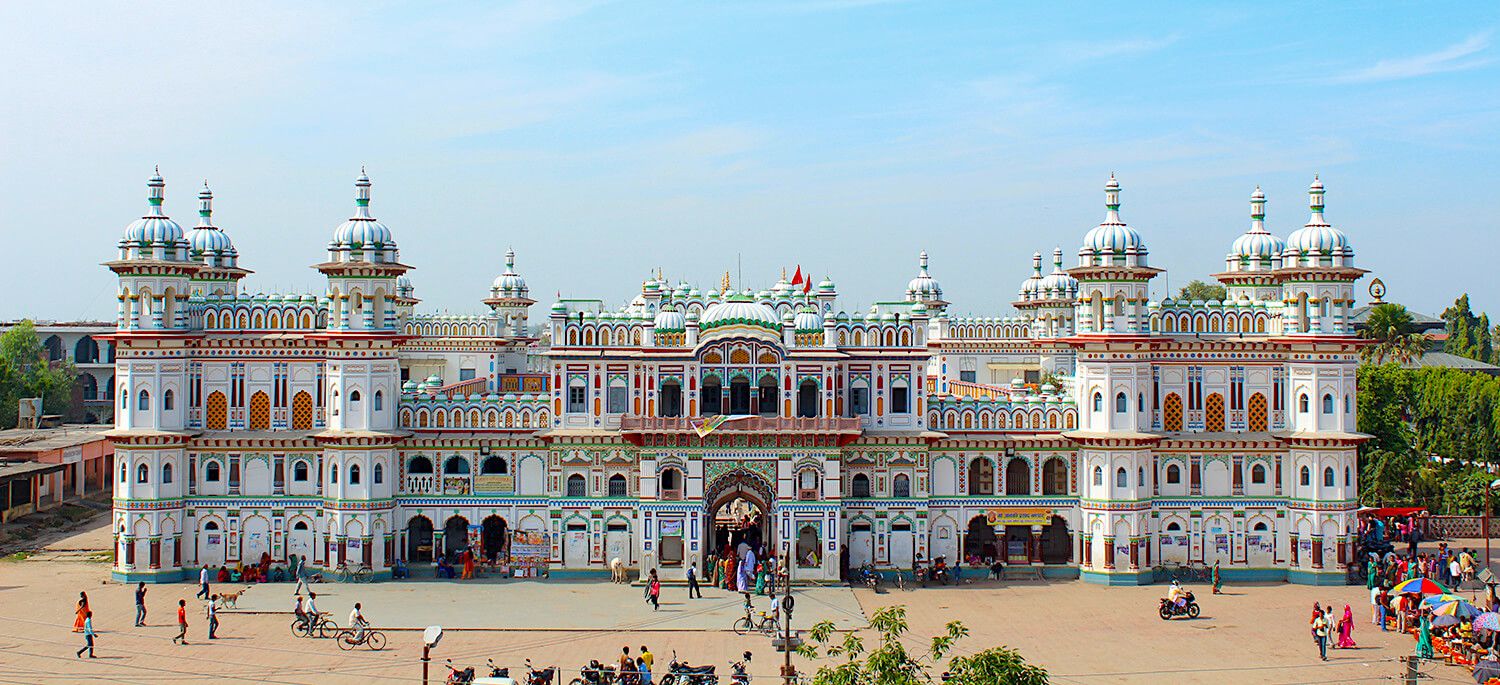
Janaki temple gets its name from King Janak, an ancient ruler of Janakpur. The story of King Janak dates back to centuries ago and it still remains in one of the most celebrated holy grail of Hindus- the "Ramayana". King Janak had a daughter by the name of Janaki or Sita, who later became the wife of Lord Ram. Ram is the incarnation of Lord Vishu who walked the earth among the humans, completed his task, and ascended heavens like an ordinary being. I will not bore you with the details of Ramayana, but the events that took place during that time signify the victory of good over evil. Thus, a temple stands in Janakpur to this day and does not let us forget our glorious history.
This temple has two other names, Ram Janaki temple and the "Nau Lakha Mandir". The latter name comes from the price that for the construction of the temple. "Nau Lakha" means nine lakhs which is somewhat near to a million. Talking about the aesthetics of the building, the whole structure is three-storied and consists of sixty rooms. The whole temple stands at a height of 50 meters and covers a total area of 4,806 sq. feet. Keeping in mind that the temple was built in 1898, the building is in pretty good shape. Since India has a lot of Hindu followers and Janakpur lies near the Indian border, it is of no surprise that the place receives thousands of visitors every year. Be it Nepali or Indian, we all go to Janaki temple for a single reason; receiving the blessings from our common God.
6. Manakamana Temple:
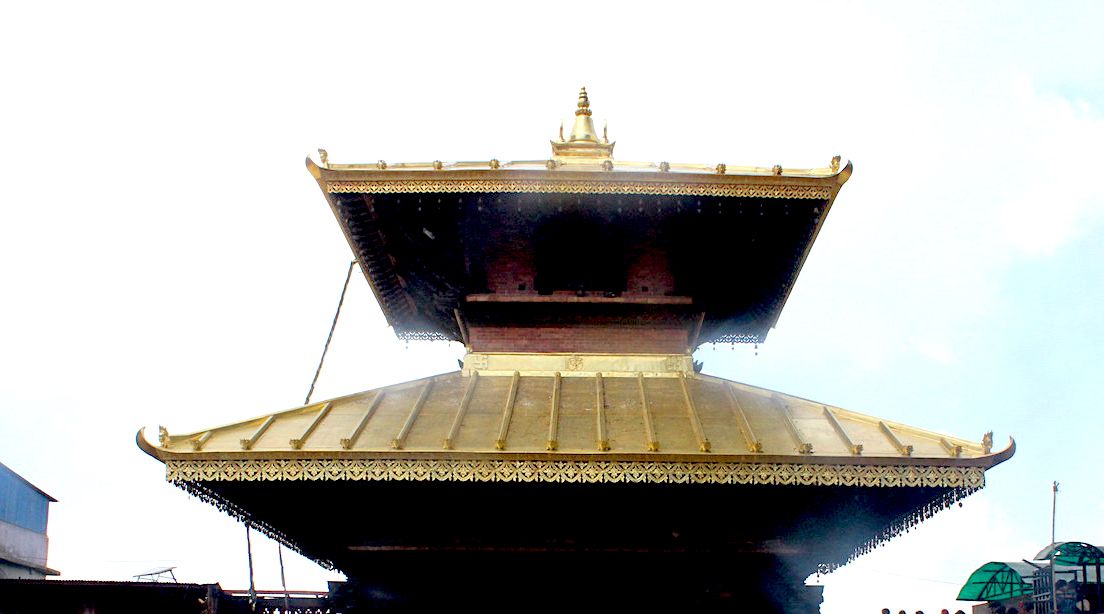
Manakamana is another important destination for Hindu followers. The place lies at a short drive from the capital city of Kathmandu. One can easily reach the place either with local transportation, rental service, or private vehicle. There are many interesting things surrounding this temple that attracts thousands of visitors every year. First of all, the name Manakamana has a heartwarming meaning to it according to the Nepali literature. "Mana" means heart and "Kamana" means wish. Thus, the place signifies a strong sense of holy importance that has the power to grant wishes to anyone that visits and offer their prayers.
You can recognize the temple entrance easily as it lies just on the side of the main highway. The place is like a never-ending festival. Hundreds of people rely on this place as the sole source of their income as thousands of devotees come here every year to get their wishes granted. Talking about actual road distance, the entrance lies 140 kilometers away from Kathmandu and just 12 kilometers from Gorkha. The reason behind its everlasting popularity is the fact that this temple is the first one to introduce the cable cars as a means of transportation. As it happens, the temple lies on the top of a hill which lies behind a couple of other hills. So, one has only two options to reach the Manakamana temple. Either you walk kilometers of steep hills on foot or take a refreshing cable car ride straight to the temple. By the way, all of them choose the latter option.
Once you reach the temple, you can offer your prayers with some flowers and incense sticks. Flowers, money offerings, food items are some of the common giveaways at this place. While you are at it, don't miss the local foods. A hungry stomach is never a good idea for traveling. Maybe also take a couple of photos to remind you of the exciting journey to the temple.
7. Changunarayan Temple:
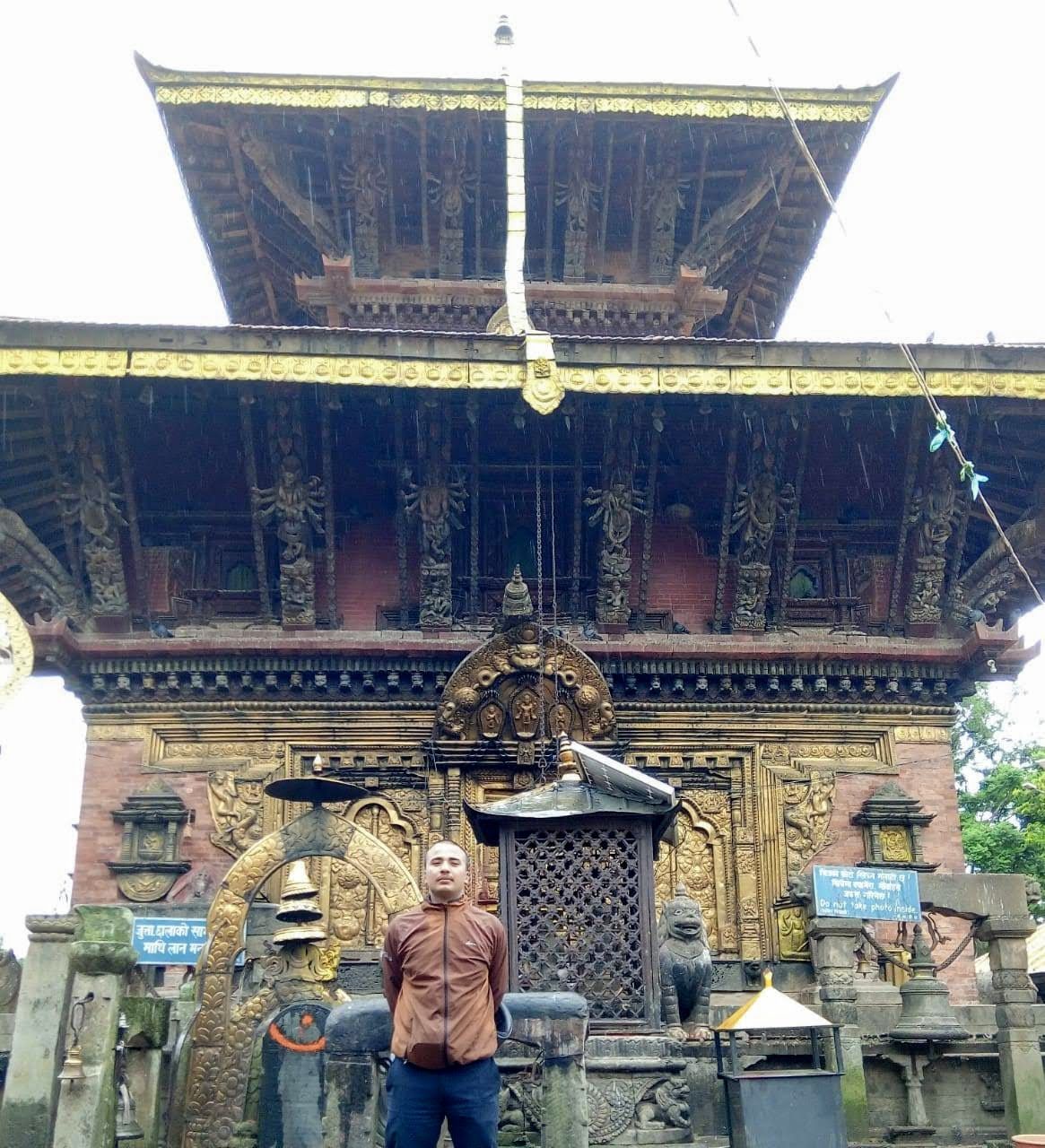
Another temple to fill your holy void. You might be glad to hear that this temple is not that far away from Kathmandu. So, if you have a time restriction on your journey I would recommend visiting this place. This is another Hindu temple that holds its roots strongly in the top 8 spiritual destinations in Nepal. The whole Kathmandu valley is divided into three land portions- Kathmandu, Bhaktapur, and Lalitpur. The temple of Changunarayan lies in the Bhaktapur area of the valley.
Asides from the religious importance, it has architectural importance of its own. You see, Changunarayan is an excellent example of the medieval culture of Nepal. History geeks often read these kinds of aspects to take a hint on the architectural development at the time of construction. Understanding the importance of this site, UNESCO lists this temple on the list of the cultural heritage of the world. The temple is solely dedicated to Lord Vishnu and his greatness. It is believed that Lord Vishnu had a curse and two humans lifted the curse off of him. Thus, the temple is the memory of a heroic act from mere mortals that helped a deity out from his restraints.
Changunarayan temple lies in the Bhaktapur Durbar Square Premises. They charge a small amount of fees for the international tourists. The whole Square has other historical buildings and temples too. So, you can stroll around with a map or rent a guide for detailed information on each of the buildings. The alleys can get really confusing so I would recommend seeking help from guides, locals, or Google Navigations.
8. Bhaleswor Mahadev Temple:
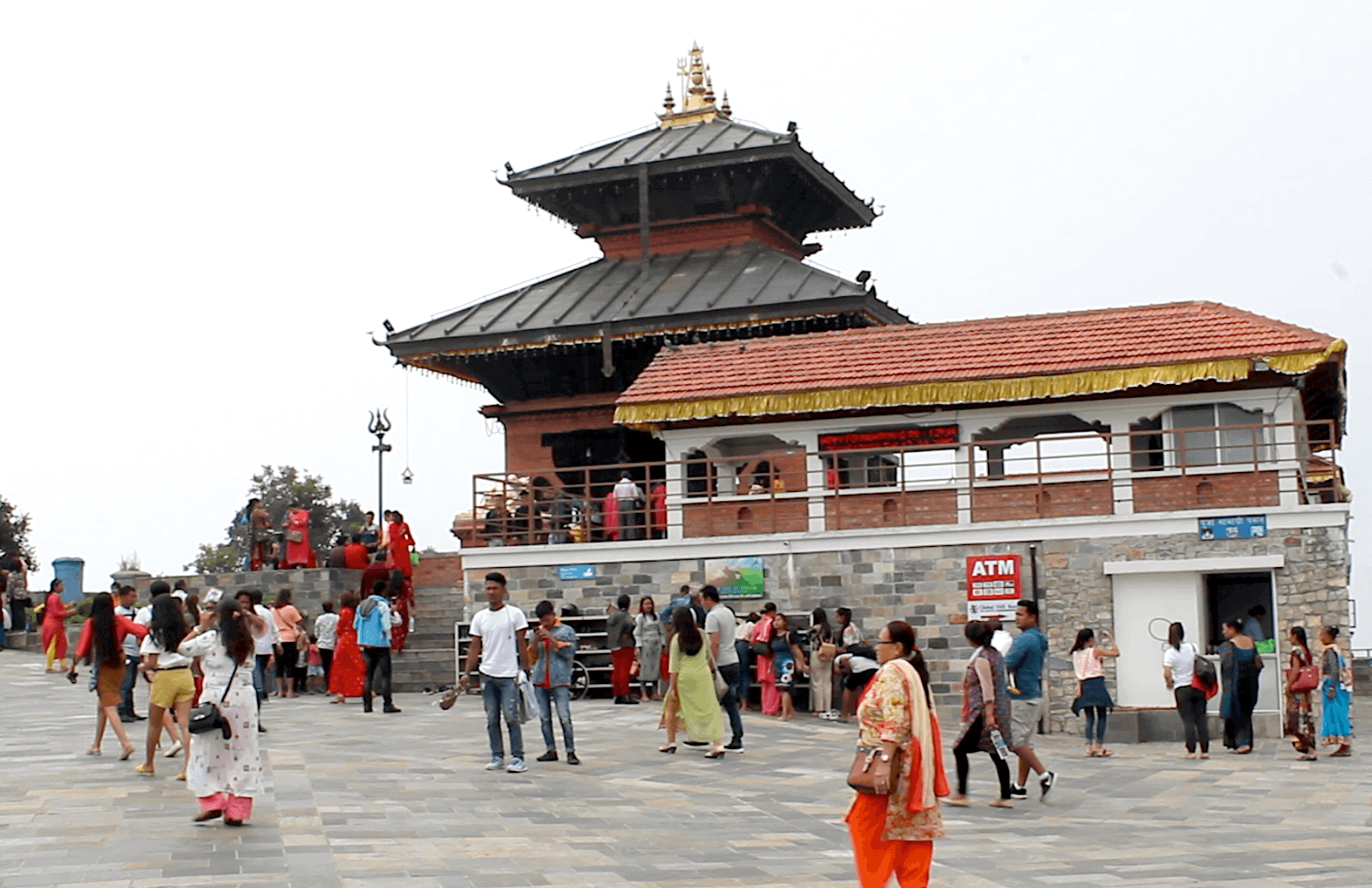
Let us end this list with a newly formed temple on the top of hill Chandragiri. Chandragiri hill lies in the gateway of Kathmandu city near a place called Thankot. By newly formed I do not mean they recently chose a place and built a temple for devotees, but the place has a completely new face now. The Bhaleswor Mahadev temple was once a small worshipping place on the top of the hill with like two stones and a trident that signifies Lord Shiva. In fact, the inauguration of this holy spot dates back to centuries ago when Lord Shiva visited the place with his dead wife Satidevi. The actual happenings and the reason behind the initiation of the place is listed in detail in the Hindu holy book "Swastani".
Recently, a non-government project rebuilt the whole destination and transformed the place into a tourist destination. They built a temple for Bhaleswor and surrounded the temple with major tourist attractions. From a top-notch hotel to a cinema hall, one can fully enjoy the blending of blooming urbanization along with a holy touch of Hinduism. The major attraction lies in transportation here. Before the whole renovation project, people had to climb up the steep Chandragiri hill to finally get to the destination. Now, they have installed a high-tech cable car that easily carries you to the top of the hill in a matter of minutes. The majestic view of hills as you cross them swinging on ropes is hard to describe in words.
I would recommend visiting the temple during snowfall. The whole hill is covered with dense snow and the way to the top is foggy. Trust me, there is nothing like experiencing the climatic desserts at the right place and right time.
So, these are some of my recommendation on the top 8 spiritual destinations in Nepal. Personally, I have visited most of these places so I was constantly trying to contain my excitement as I wrote these words. Other than that, making the most out of a situation or place is entirely on your shoulders. Nepal has many other religious places with similar enjoyment options. You just have to have an open mind and a keen desire to explore a new religion. Be it Buddhism or Hinduism, the religious and spiritual vibe you get from these places are an experience of a lifetime. The temples and Monasteries are just the tip of the vast religious sphere of Nepal. Thousands of tourists come for religious cleansing and spiritualism to the above-mentioned destinations. Why not add a digit to that thousand the next time you plan a vacation?
Cover image by Abhishek Dutta / CC BY-SA
